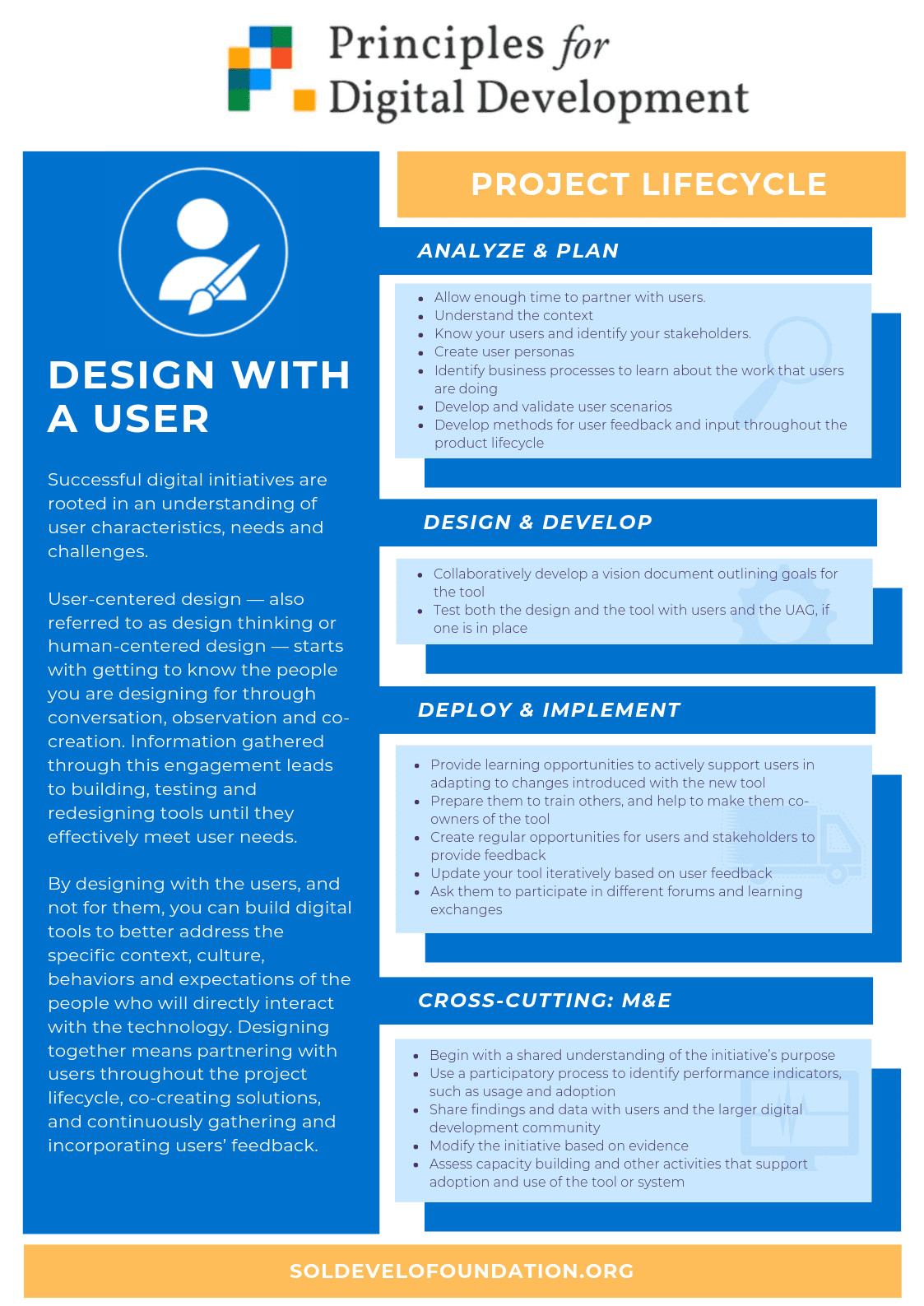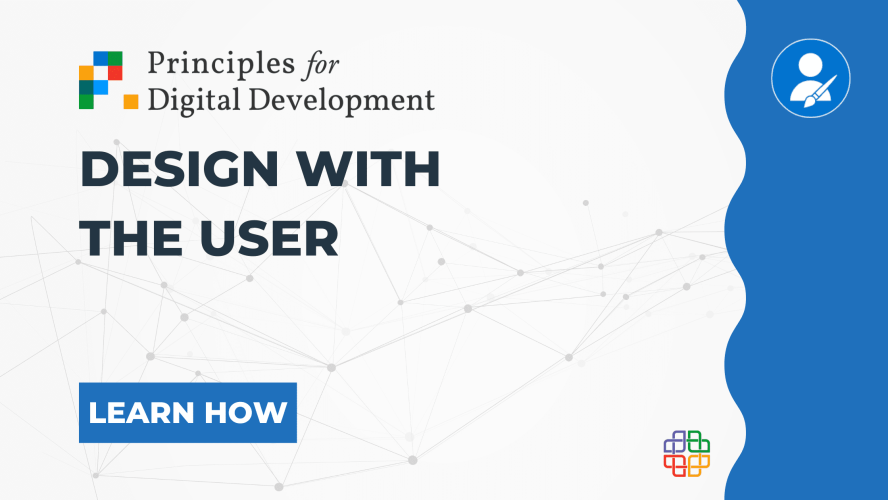Design with the user is the first out of nine Principles for Digital Development. It lays at the very core of digital projects. If a digital product was a body, its users would be the heart. The project won’t go anywhere or do anything without them. The users are filling it with life. To create a truly successful product or service, you have to always carry this mindset with you. How and when you will incorporate users’ ideas and feedback into your digital design can decide whether you create something great or fail to do so.
If you’re not familiar with the Principles for Digital Development, we encourage you to read our previous article:
Principles not only in software, but also in NGO
The Digital Principles were designed among development practitioners to share knowledge and support. They were created in a community-driven effort as a result of many lessons and experience in the use of information and communication technologies (ICTs) in development projects. The goal of the Principles is to use hard-won knowledge to make projects better at every step.
However, the Digital Principles turn out to be useful not only in IT projects. These rules are also present in marketing, NGO and many other sectors. In all of these cases, the user is the central part of every project. Hence the rule “Design with the User” came to be.
For many companies and organizations the most natural way of developing their projects is to first finish them, and only then ask users for feedback to make adjustments. However, this is not how it should be done. We must include the user from the very beginning, continuously asking them for opinions and gathering their ideas on how to make the product as functional and useful to them as possible. We must communicate with the user, learn about the user and feel for the user. Otherwise, what’s the point?
In case of NGO projects, it’s tremendously important to closely cooperate with the users. After all, we want to help solve issues that they are having in their lives, and who will know better how to achieve that than themselves? The common mistake that a lot of organizations make is designing for the user. Having only a very shallow, simplified understanding of the user’s problems, they create solutions that they think are needed. However, oftentimes it turns out to be a miss. Only by establishing a cooperative relationship with the user, can we create truly successful projects that meet the expectations.
With the assistance of the user, we can build better tools that address specific groups, optimizing them in the aspects of culture, behaviors, regions, expectations of people and the technology that they are used to.
If you don’t know what their expectations are, the best way to start is to talk with them. Analyze what you see, what they are interested in and where you are in these groups and topics. Designing with users means partnering through the lifecycle of a project, creating solutions, tools, gathering feedback, developing and creating new interesting things. Together.
Design with the User: 8 Basic Rules
Here are the 8 basic rules to help you incorporate the “Design with the User” Principle in your project:
- “Always think contextually”
Remember that you are designing solutions to specific problems for a specific group of people living in a specific ecosystem. Remember to always put your ideas in the accurate context and check if they are really suitable to the circumstances. Sometimes you have to accept the fact that a digital solution is not the best fit in the given situation.
- “Improve users’ current processes”
Create solutions which will be useful for current situations and problems, not for the future ones. Help people optimize their time, organize work, and make tasks easier with appropriate resources.
- “Develop tools already created”
Improve them based on the information gathered from users. Customize existing solutions to fit users’ needs, expectations, problems and hopes.
- “Set yourself clear objectives”
Have an aim in your mind and do things that get you closer to it. Develop useful projects with a real impact and application.
- “Work with different types of users in each step of the project”
Different people with different types of needs and expectations tell you where you should direct your design and features. The users will guide you on your journey of project development. Listen to what people say about your work and extract the most important things.
- “Be open to new”
Let people participate in the designing process. Be open about setting expectations or implementing new features. Don’t dismiss any new idea. First give them a chance and look at how you can achieve them and if they will get you closer to your goal.
- “Think about how you can use the iterative process”
Adapt tools based on feedback and don’t forget about the goal. Test and update products as much as it is needed. Remember that you should be proud of it and users should enjoy it.
- “Remember about the underserved”
Your design must consider the needs of underserved people and be sensitive to their problems and expectations.
The Lifecycle of “Design with User”
The Digital Principles project lifecycle includes the following phases:

To help you apply the “Design with the User” Principle in your digital projects, the creators of the initiative provide a guide. You can find it here.
Continue your journey with the Digital Principles and read about the 2nd one – “Understand the Existing Ecosystem“:
Learn to use Digital Principles in practice:
Digital Principles Organizational Self-Assessment
Digital Principles Indicator Library
Digital Principle-Focused Evaluation
The Principles For Digital Development: Gold Practices




